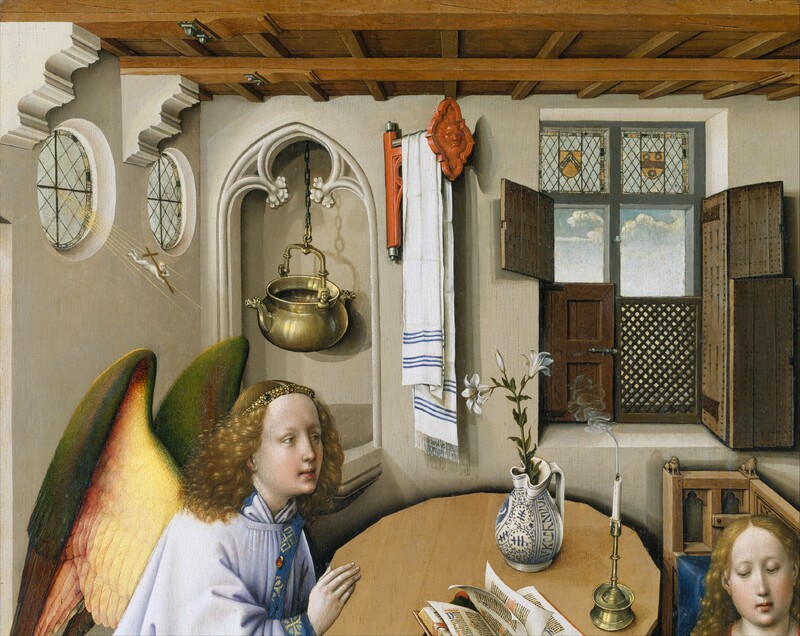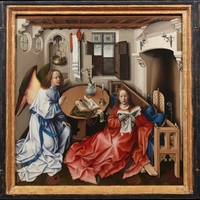Annunciation triptych
Type:
Altarpieces,
Panel paintings,
Triptychs
Date:
ca. 1427–32
Location or Findspot (Modern-Day Country):
Belgium
Medium:
Oil painting,
Wood
Dimensions:
64.5 × 117.8 cm (open)
Description:
In the central panel of this triptych, which predates the two wings, the Annunciation is about to take place in an early fifteenth-century domestic setting. A tiny figure carrying a cross heads toward Mary, borne on golden rays of light that enter from a window at the left. The Virgin is reading her book, still unaware of the angel's presence. In a room to the right, Joseph, Mary's future husband, works in his carpentry shop; several mousetraps allude to a statement by St. Augustine that the cross is the devil's mousetrap. At the left, an open doorway gives the patron of the two wings, the merchant Peter Engelbrechts (and eventually his wife, Margarete, added in the 1430s), a privileged view of the sacred scene. Updating paintings to document weddings or childbirths was typical of Netherlandish art (i.e., roughly equivalent to modern Netherlands-Belgium, at the time ruled by the dukes of Burgundy); the coats-of-arms in the central windows are also later additions (the windows were originally gilded). The relatively small triptych was intended to be a focus for private devotion in a home much like the one depicted.
This work was made in Tournai in the workshop of Robert Campin, an early Netherlandish painter who worked in the relatively new medium of oil painting. Pigments mixed with oils permitted multiple thin layers of vibrant colors that suggest varied textures and convincing three-dimensional forms. By the mid-fifteenth century, the technique was imitated in southern Europe.
This work was made in Tournai in the workshop of Robert Campin, an early Netherlandish painter who worked in the relatively new medium of oil painting. Pigments mixed with oils permitted multiple thin layers of vibrant colors that suggest varied textures and convincing three-dimensional forms. By the mid-fifteenth century, the technique was imitated in southern Europe.
Relevant Textbook Chapter(s):
10
Repository and Online Resources:
• The triptych is in the Met Cloisters, inv. no. 56.70a–c.
Image Credits:
Metropolitan Museum of Art




